The Whirlpool Galaxy
The Galaxy That Fueled My Astrophotography Journey
Mark Watson
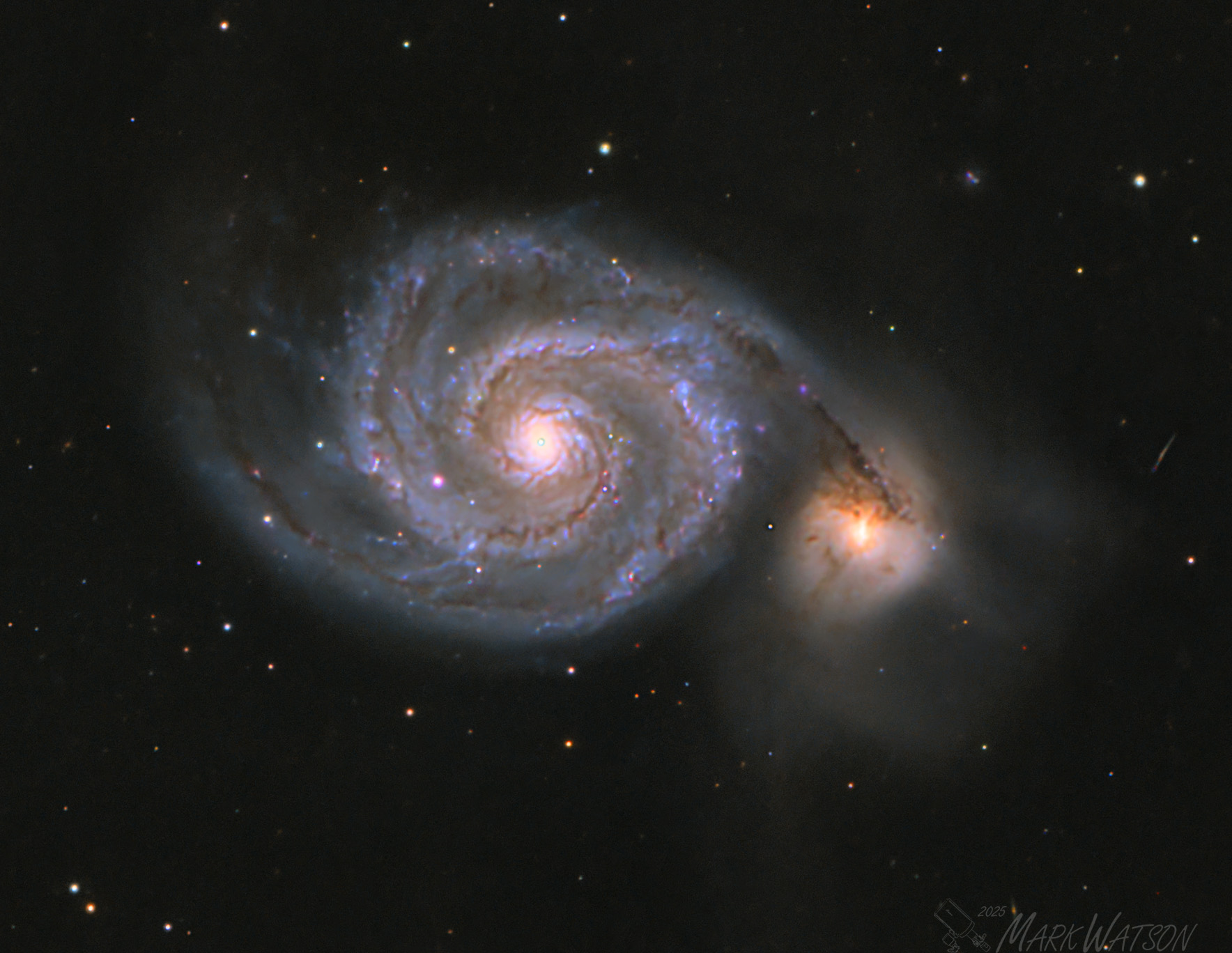
From the moment I first learned of Messier 51, the Whirlpool Galaxy in an astronomy elective during college, I was hooked. It's spiral arms exhibit remarkable symmetry, with it's smaller companion galaxy adding a striking contrast. Together they offer a glimpse into the vast ever-evolving nature of the universe. I couldn't get it out of my mind. It became a goal to capture it for my own. Little did I know then, it would take me years to even get close.
My journey began with an old telescope that I dug out of my grandparents' attic. A Jason 313 Discoverer! 60mm f/11 refractor. It was a cheap piece of equipment (though before the era of plastic, and apparently now a qualifying 'vintage' telescope!). Though heavy and full of dust, the optics were true. Armed with nothing but this relic, I spent countless nights sitting on the rooftop of my apartment in downtown San Francisco, scanning the skies. For months, I searched for the galaxy, caught in the uncertainty of whether I had even found it, let alone captured it. Sometimes, I thought I saw its faint spiral arms just beyond the reach of the bright city lights, but I couldn't be sure. That was until one evening in 2009, after what felt like a thousand attempts, I finally, indisputably locked eyes with the Whirlpool Galaxy. I could barely contain my excitement. It was a moment that marked the beginning of my deep obsession with the cosmos. And to commemorate that elusive sighting, I even managed to sketch what I saw—a faint, but real, glimpse of M51.
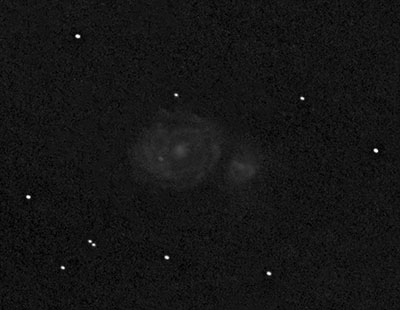
The years that followed were a blur of trial and error. As my career took off, so did my determination to image M51 in all its glory. In 2013, I made my first significant investment: a Celestron AVX go-to mount paired with a 6-inch Newtonian telescope. Now, at least I had a tool that could guide me to the right spot. But even with this new setup, success was no guarantee. I spent countless nights alone in the cold, trying to get the alignment right, struggling with framing, guiding, and adjusting the focus. Armed only with a manual star chart and the rudimentary hand control for the mount, each night felt like a battle. But then, after many nights of frustration and hard work, I finally succeeded again! I captured a few minutes of data on M51 with my DSLR camera. It wasn’t much, but it was enough to see the swirling arms of the galaxy, however faint. While the excitement once again stirred, I knew I could do better.
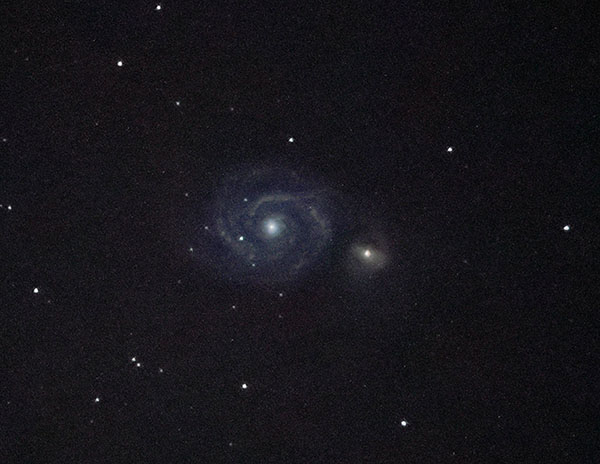
But as life continued to unfold, the telescope gathered more dust than photons. The long nights of setup and takedown, the repetitive effort for just a few minutes of imaging—it became harder to sustain. My astrophotography dream faded into the background as I focused on other aspects of life.
Then, in 2018, I had a brief reprieve. The skies were clear once again, and I was determined to get serious. I purchased an 8-inch Ritchey-Chrétien telescope, a piece of equipment that promised sharper images and deeper views. But with double the focal length of my previous setup, the challenge became even greater. It was a new level of difficulty—aligning, focusing, and tracking became an exhausting process. Still, I pressed on, and after all the struggles, I once again captured M51, and better than ever. Even though it was only 60 seconds of exposure time, the detail—the actual, discernible spiral arms—was breathtaking. I had finally begun to see what I had been chasing for so long.
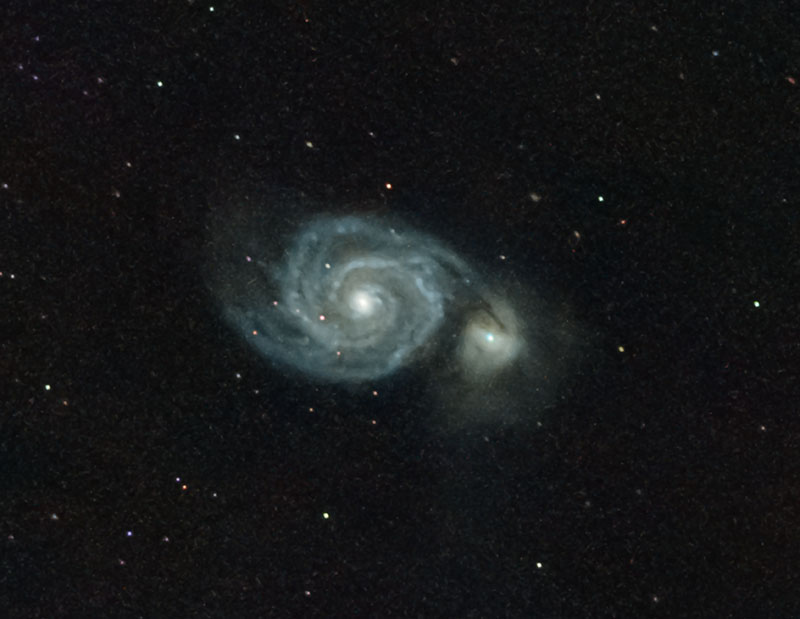
The excitement, unfortunately, was again short-lived. The time and effort to produce even this still modest result had worn me down. Setup, focus, tracking, and then tear-down for just a handful of minutes of imaging—it was becoming too much. The journey that had once felt exhilarating now seemed like an endless loop of frustration and effort. And so, once again, my telescope was packed away.
At long last, in October of 2024, something incredible happened. A week of cosmic events lit up the sky—the Northern Hemisphere witnessed some of the best auroras in decades, and a comet, one of the best in years, graced the skies. It reignited my old passion for astrophotography. Yet, this time, I was drawn to something new—a little gadget that promised to change everything: the Seestar S50 Smart Telescope. A tiny device, it could be set up in seconds and handled all of the alignment, framing, focusing, and imaging automatically. No more hours of frustration. Naturally, M51 was one of the first targets I set it on, and the result was stunning.
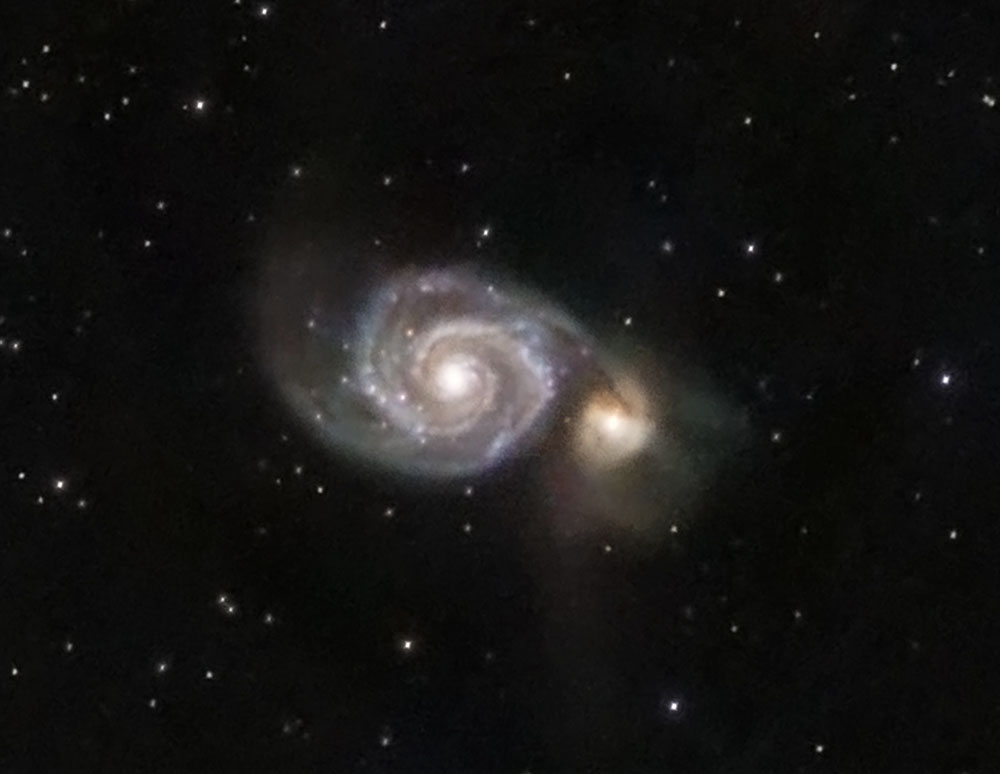
Despite its small size, the Seestar S50 allowed me to image for hours, capturing more than I ever thought possible in one session. But I wasn’t content with just one target. Whenever the skies cleared, I pointed the Seestar S50 at anything I could—nebulae, star clusters, galaxies—anything and everything, imaging for an hour or so each time. I was hooked again, but this time, I had technology on my side. I dove deeper into the world of astrophotography, discovering tools like NINA, dedicated mini-PC controllers, and perhaps most importantly, plate solving.
By now, I was more determined than ever to push my limits. I upgraded my equipment once more: a new mount, a new camera, an automatic focuser, and a mini-PC to control everything. With all the pieces finally falling into place, I was ready for a new beginning. In January 2025, I was poised to take my astrophotography to the next level, equipped with everything I had learned, and everything I had dreamed of for so long.
As I stood once again beneath the night sky, ready to try M51 like never before, I realized how far I had come. From the dusty attic telescope on a San Francisco rooftop to the cutting-edge technology at my fingertips, it had been a long road—a road marked by failure, frustration, and, ultimately, triumph. The Whirlpool Galaxy was no longer just a distant dream; it was within reach. And this time, I was ready...
